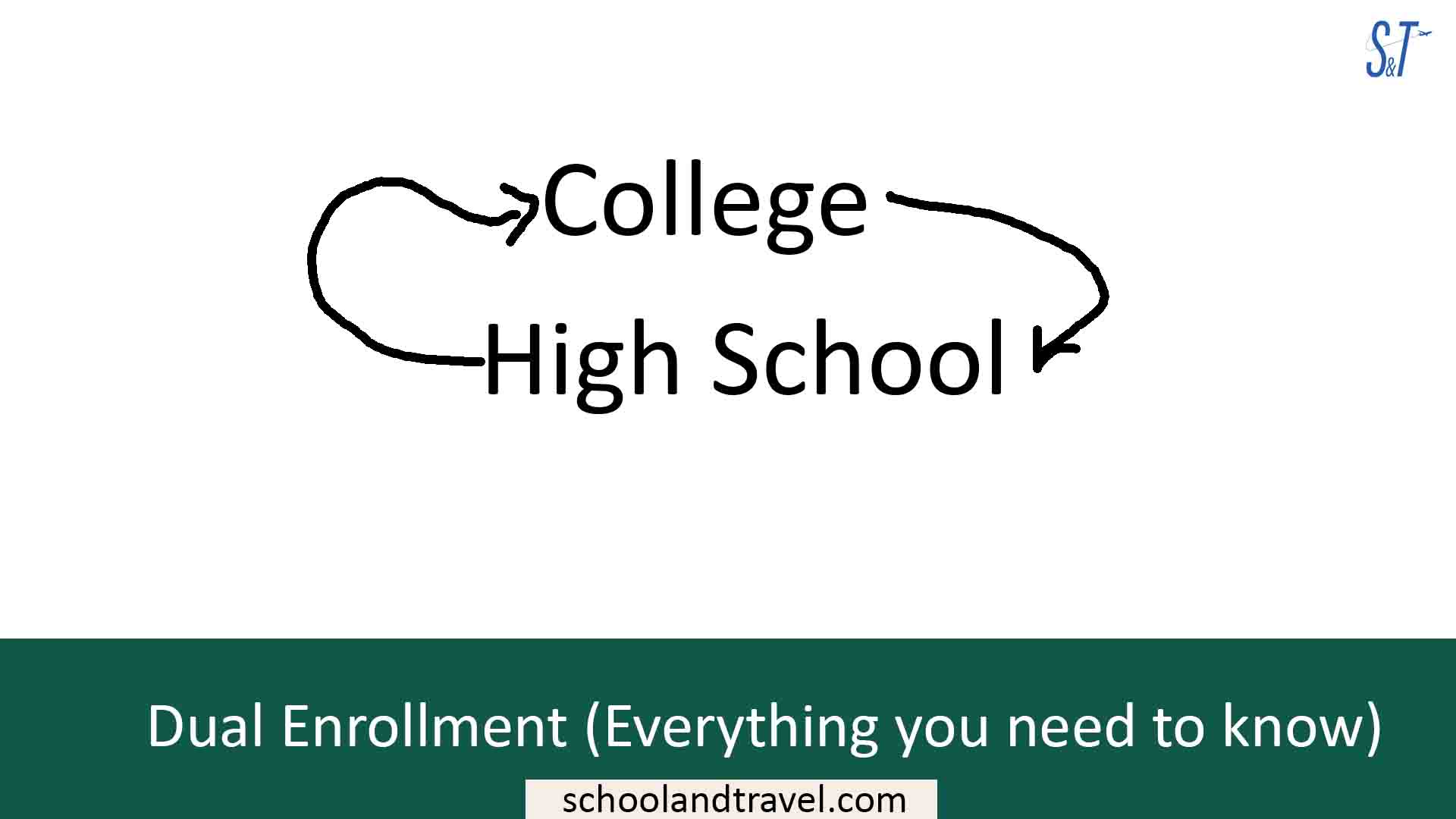I keep wondering what the word “Dual Enrollment or Dual Credit” means. Could it mean, enrolling in two college degrees at a time or enrolling in two colleges simultaneously? In this article, I will explain everything you need to know about Dual Enrollment, classes, Eligibility status, funding, and the pros and cons.
What is Dual Enrollment?
Dual Enrollment means attending both college and high school simultaneously. It has to do with taking college courses and also high school courses while still being in high school. It’s a way to reduce the workload and cost of attending college.
The program is in such a way that a high school student earns college and high school credits outside of the usual high school curriculum.
Also known as Dual credit, it makes advancement from high school to college easier for you because you already have forehand knowledge of what college courses look like.
Courses available for Dual Enrollment:
Here are some of the classes available for the program:
- English
- Math
- Science
- Humanities
- Social Studies
Read this: Things to do on the first day of community college
How Dual Credit works?
The program works in such a way that the student can take both programs simultaneously. Firstly, it’s not everyone that can handle the stress of taking the two programs.
Dual Enrollment is a choice, and it requires much motivation and hard work to scale through till the end. Here are some of the factor put into consideration before considerating Dual Credit:
- Eligibility based on state requirements
- Funding for both college and high school
- Checking the introductory classes.
Dual credit requires time and commitment to excel in both programs which entail planning and motivation to scale through. Classes can be taken online or in high school or if the student decides to go through a local college campus.
Benefits of Dual Enrollment:
Just as attending college and high school simultaneously isn’t so comfortable, here are the major benefits of dual credit in college and high school.
Less Cost for College:
The simultaneous enrollment process reduces the fees of attending college. Such that if you are to pay 100% of the funds to attend college, the dual credits will help you get a discount to study in college after high school.
The cost of taking the courses on the dual credit program will cost less unlike when you are in college studying full time. Studies say that the program costs about cost $0 to $400.
Less Classes in College:
Just like you are taking some of the college classes in high school, you will have reduced courses to take after high school. On the other hand, students can earn credits before entering college, which will help them to graduate early, unlike their college mates.
Some of the prior credits that they can earn come from the general knowledge courses that students take during the early years of college thus helping them graduate earlier or on time.
Early Career:
After the dual enrollment program, college studies will be faster because you have already covered most of the basic courses while in high school. Graduation will also be earlier, thus opening you up to a career faster, and at a younger age with vast knowledge in a specific field.
Eligibility for Dual enrollment:
Although the enrollment process varies from state to state, the first factor is age. The ideal age for the acceptance for dual enrollment is at least 16 years old. More of the criteria is that the candidate should be a high school sophomore, juniors, or seniors and should have to maintain a Grade Point average of 2.5 to 3.0.
Three states in the United States require the student to be at least in the sophomore year to be eligible for dual credit while more than 11 states require at least a junior to be eligible.
Besides, some states require the student to get a letter of recommendation from their teacher, principal, or a notable person to be able to enroll for dual credits. Students with excellent academic strengths and fewer weaknesses can be given the go-ahead to engage in dual enrollment coupled with parents’ permission.
Finally, the student must be performing excellently well in high school to consider enrolling in college. Because the dual program requires time and motivation to excel in it. Also, a high score in initial placement exams will play a major role in building up the eligibility for the dual enrollment in college.
Read also about Capstone Project
Funding for Dual Enrollment Program:
Just like the eligibility for each state differ in states, the same applies to the funding for dual credit. In some states, the government takes care of the financing, while in some other states, the student pays all the tuition fees. The institution at times covers the costs, and students are often asked to pay the fee beforehand.
Cons of Dual Enrollment:
Just like there are benefits of enrolling in dual credit, there will also be cons of the learning process. Here are the cons:
Stress:
The mental stress that comes with combining college and high school courses is enormous. There are times that you will want to rest, but remembering the college courses you need to cover for the next day, you will sit up and start reading again.
Clash of Courses:
There are times that college and high school courses might clash; in a situation like this, which one will you go for?
It’s not a good idea to study one at the expense of the other unless you have a way of covering up after all the classes. On the other hand, put into consideration the break periods that you can use to rest and refresh for the next classes.
Final tips:
Dual Enrollment gives a gifted student an upper hand over other students in school and sometimes in life as a whole. Thus if you have the opportunity to go into dual credit, move into it.
Although it not easy, it’s worth the time and stress because it will make college life easier for you.
Awesome one, I hope this articled helped.
Thanks for reading.




